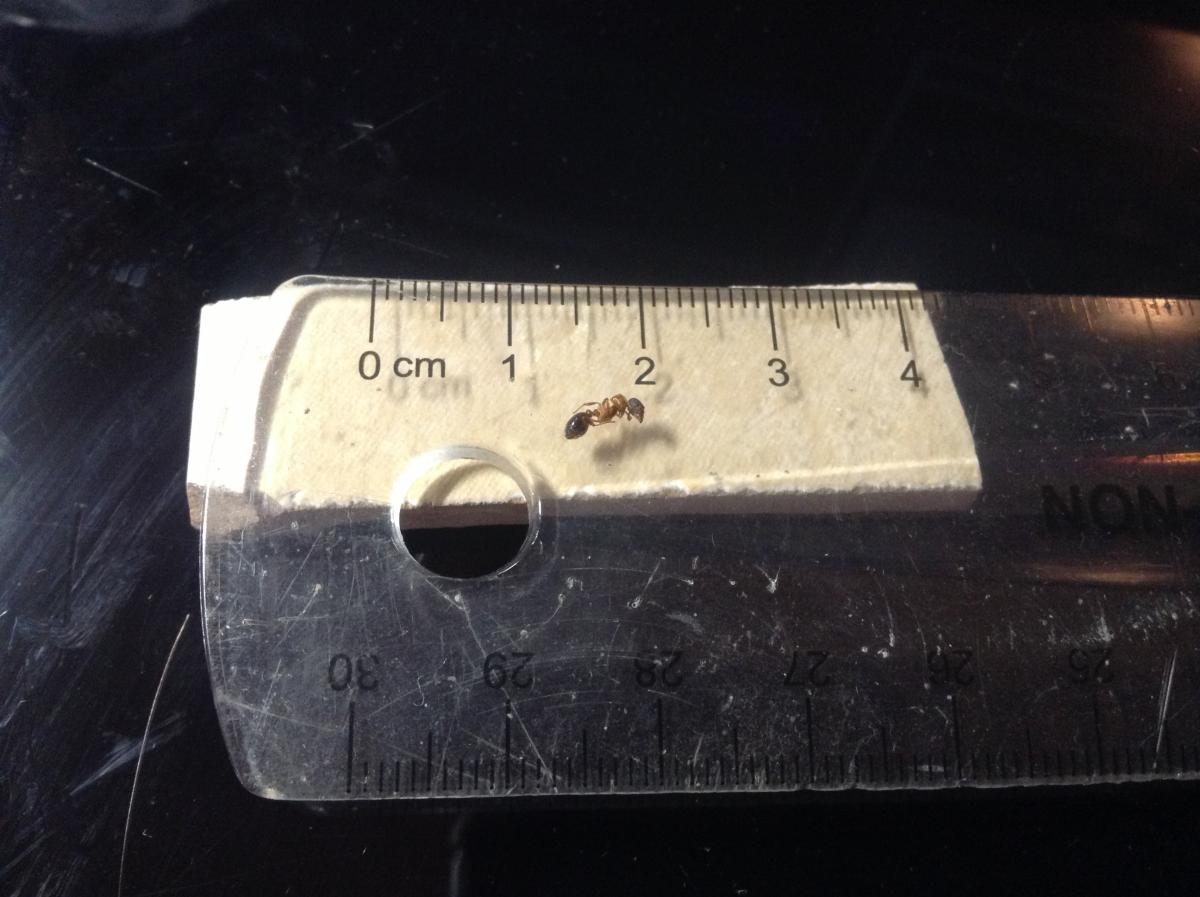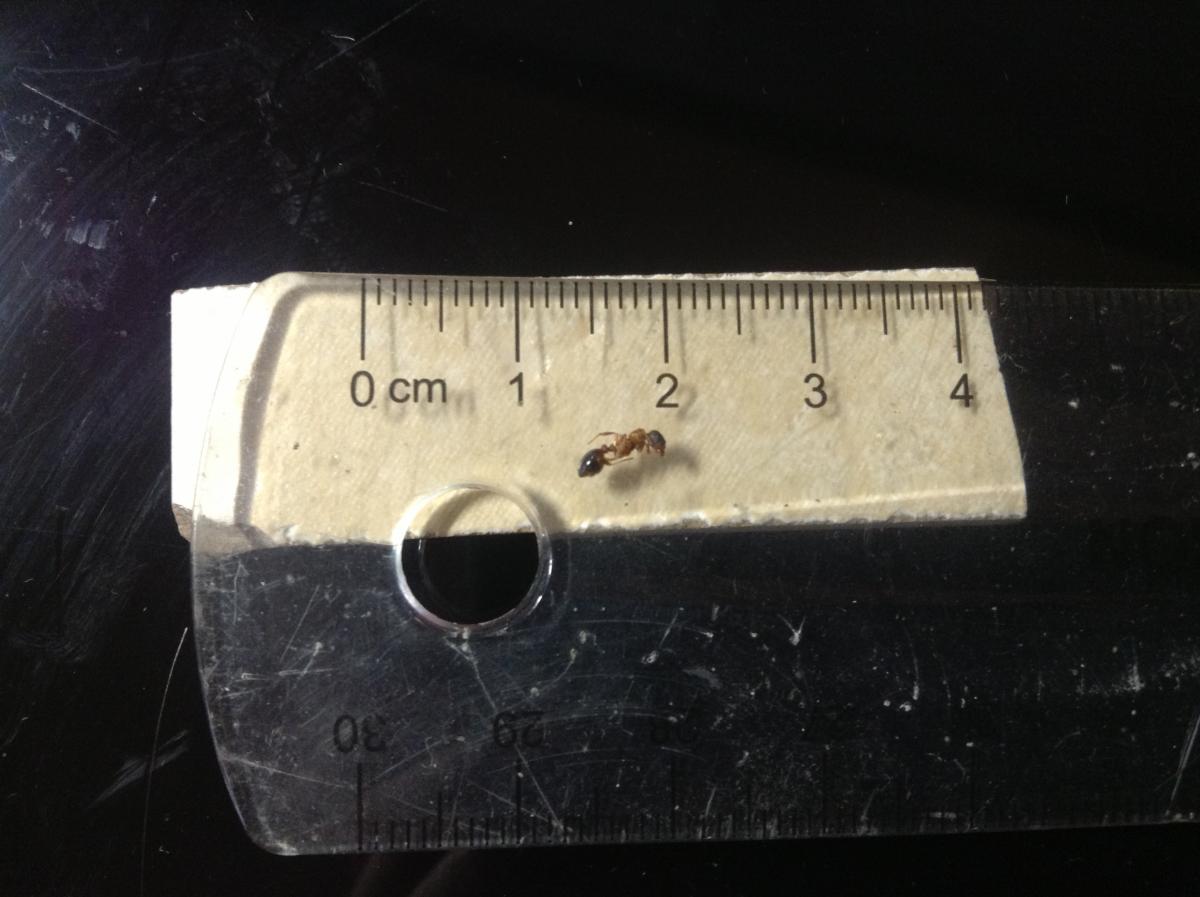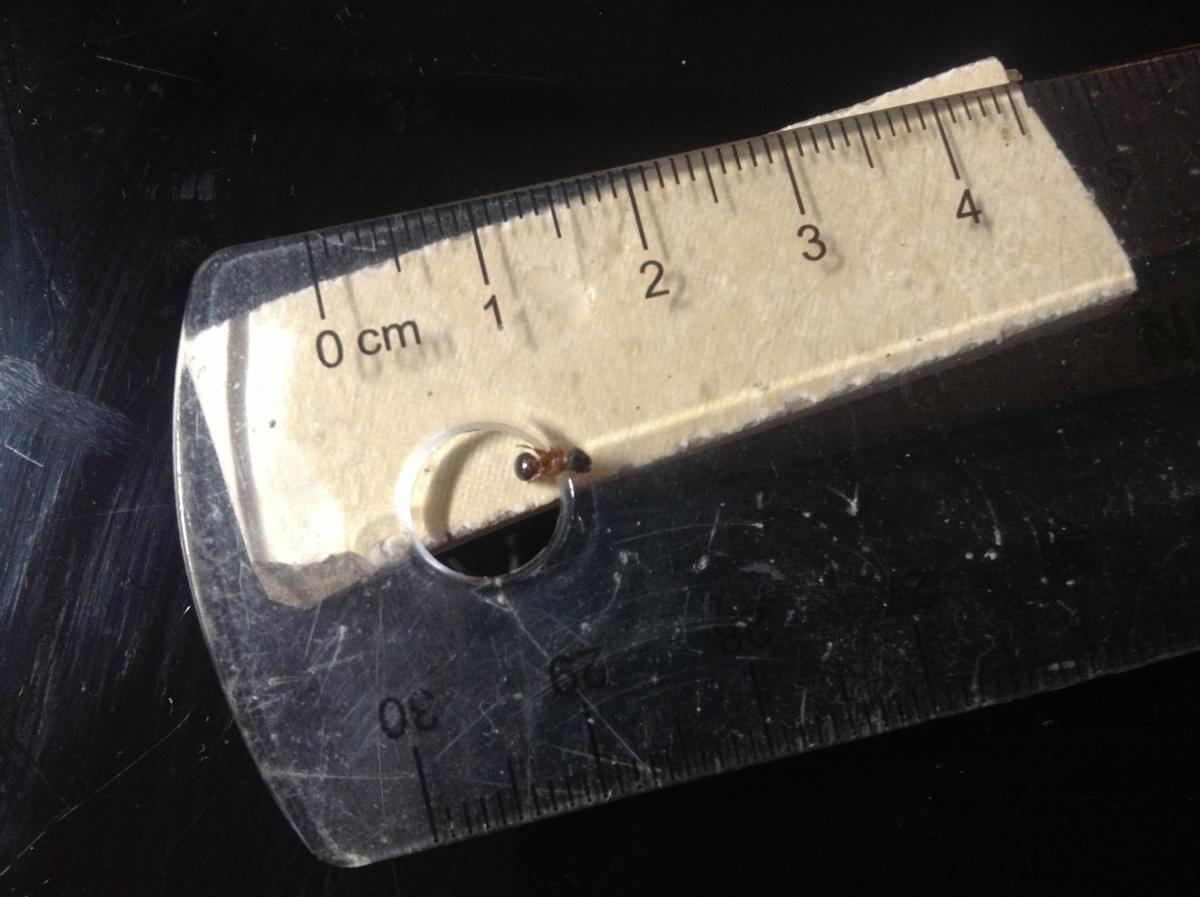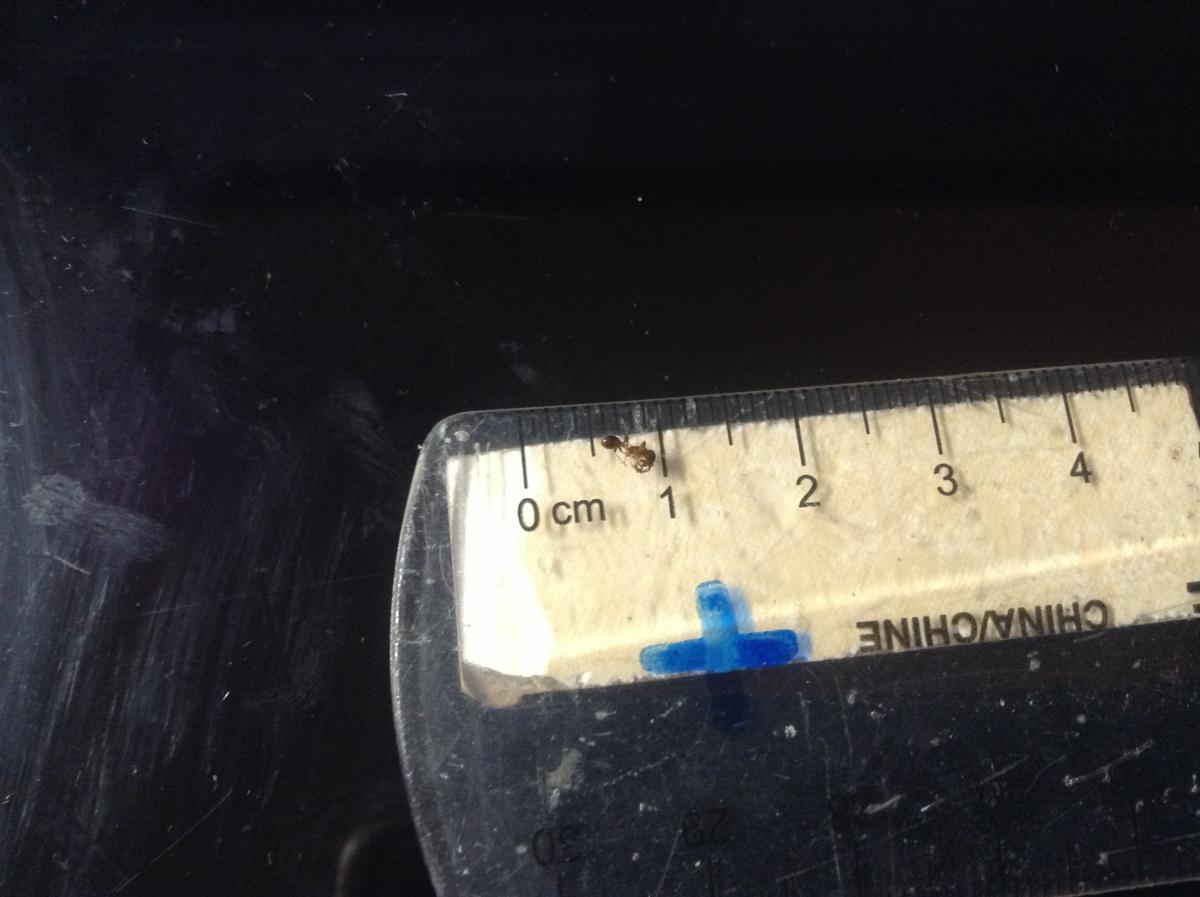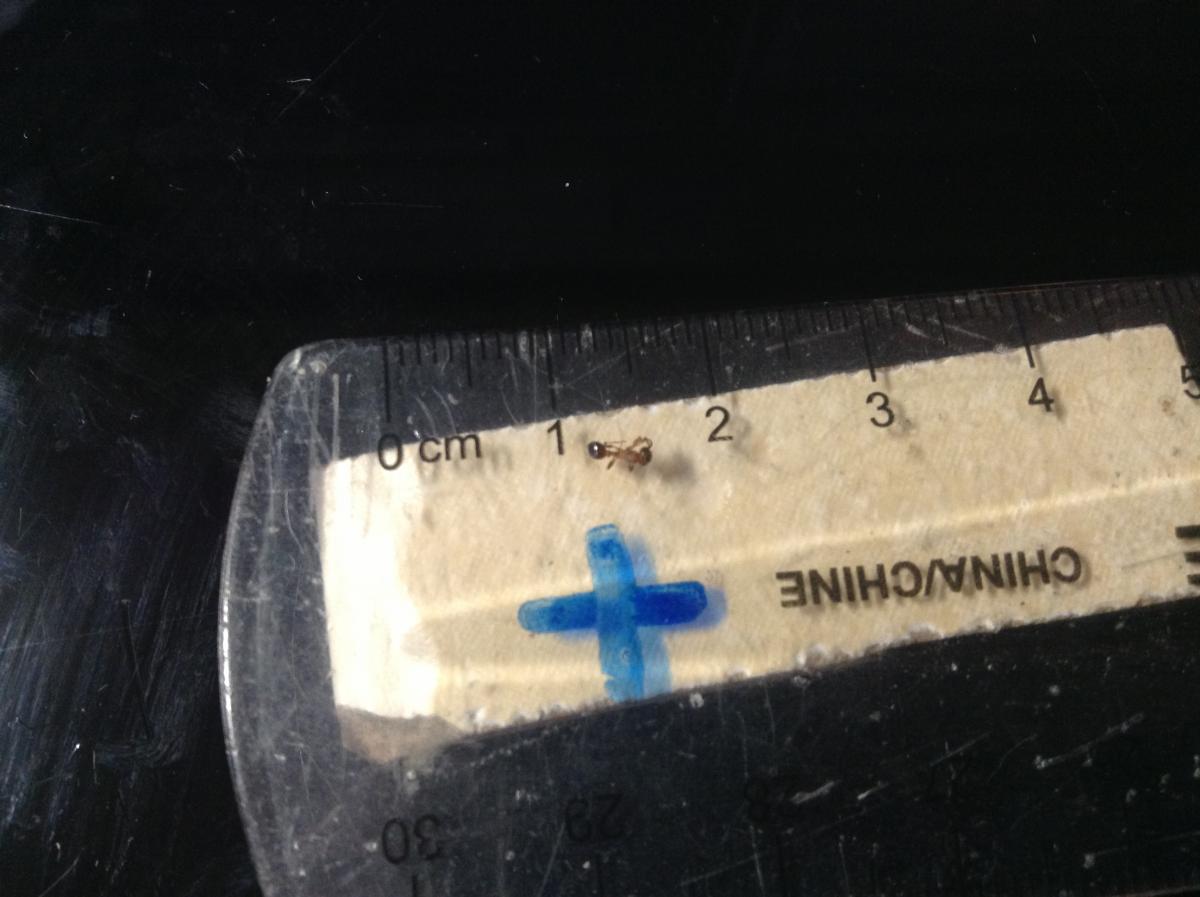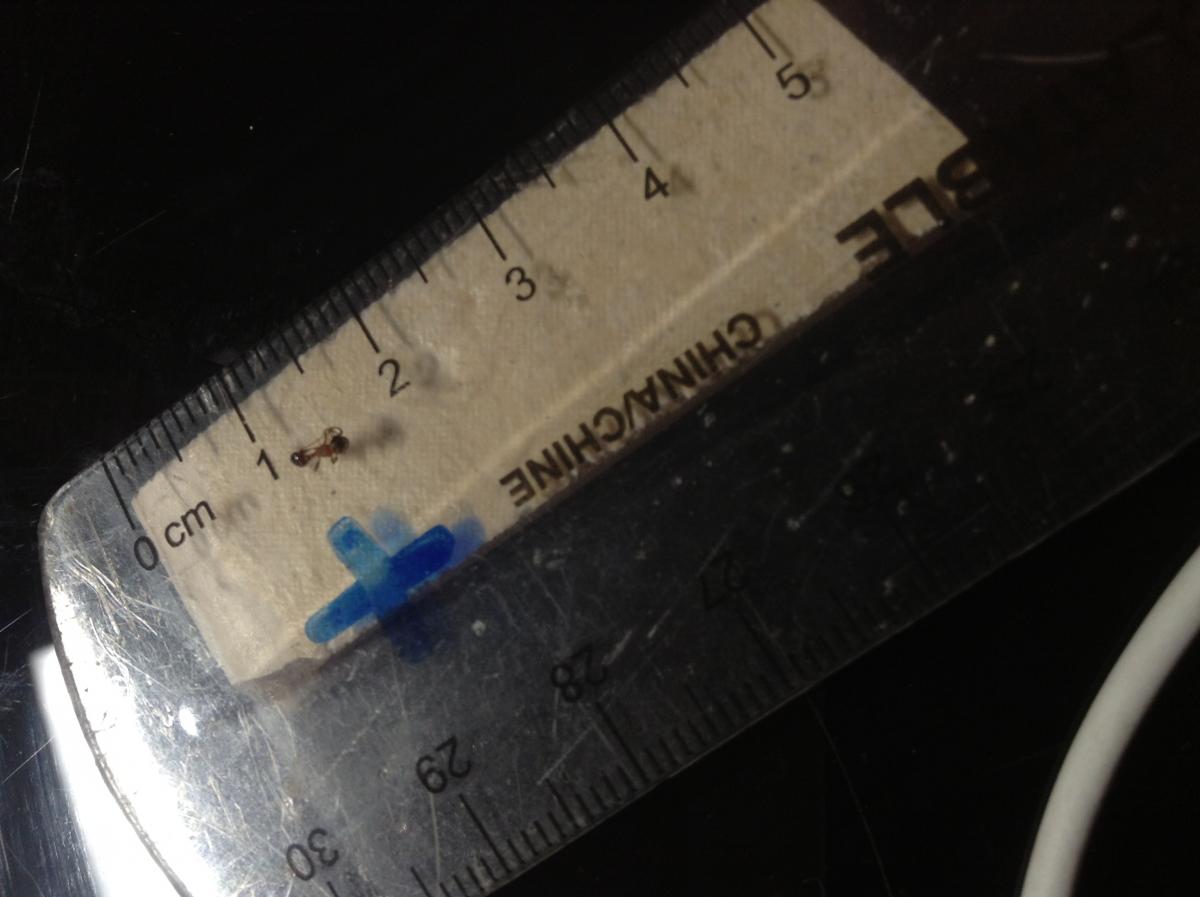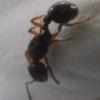1. Location of collection: Some mountain in BC, Canada.
2. Date of collection: August, 10,2015
3. Habitat of collection: Grass and sandy soil. In the mountains of BC.
4. Length (from head to gaster):Queens:around 7mm,workers: 4mm - 5mm(these are big Myrmica)
5. Color, hue, pattern and texture: BrownishOrange thorax with brown-grey head and black gaster.
6. Distinguishing characteristics: they have spines, unknown if they posses a stinger.
7. Anything else distinctive: Rather large for a Myrmica, Preyed on by this Formica sp.
8. Nest description: Unknown, no nest located. Most likely polygynous.
I found these Myrmica the same place where the those Formica were. The queen I found is no more than an empty shell dumped at the entrance of the Formica nest; the top of her thorax was gone and her gaster was hollow. ![]()
Edited by LC3, August 15 2015 - 1:49 PM.



